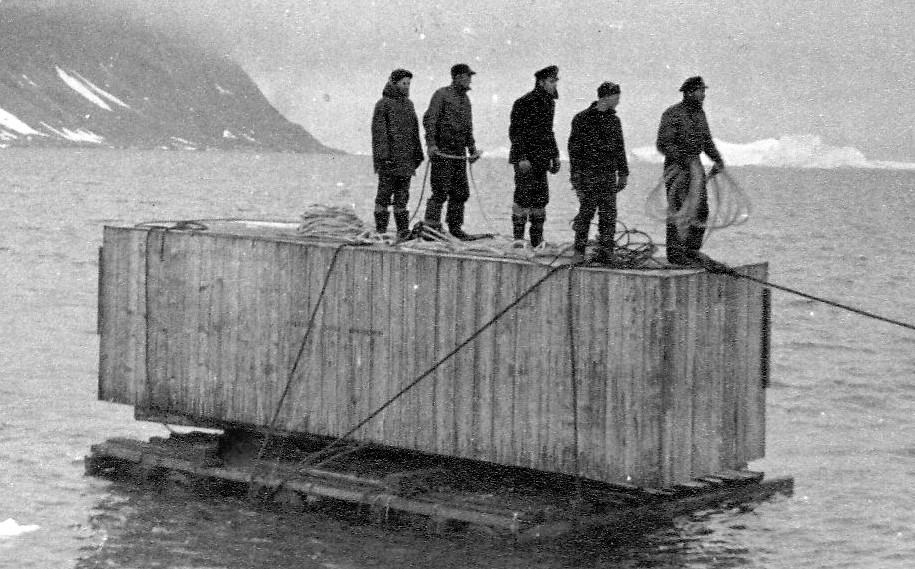The Auster Autocrat, G-AIBI (continued)
Header Photo: G-AIBI (“Ice Cold Katy”) arriving at Base E on February 6th, 1947. (Photo by John Tonkin Ref. JET015, courtesy of Keith Holmes)
First, the men had to build a hangar, which they did by February 19th. (Read more here….)
Then, David found, when he unpacked the crate on February 21st, that no skis had been sent and the aircraft’s wheels had suffered extreme corrosion by salty water, (but they could, nevertheless, be used). Despite this, he started to assemble the plane, on its wheels, on February 23rd, had the job done within in two days, and got the engine going on the first swing of the propellor. He then went off sledging until March 10th.
While away, the bitch called Monkey was inadvertently locked in the hangar and tore the aircraft’s fabric when trying to get out, so David’s next task, when he returned, was to repair that damage. On March 25th, the plane was wheeled out of the hangar and its engine was easily fired up once more.
At last, MV Trepassey and MV Fitzroy arrived with the main skis on March 31st, and David and Tommy had them fitted by April 3rd, ready for a test flight soon after. This was to be made from the Northeast Glacier (there being no sea-ice). Incredibly, no tail ski had been sent, and getting the plane over stones to the snow proved awkward, but the aircraft was somehow manhandled under power up the ramp and onto the glacier where side winds and the uncontrolled tail wheel caused frightening side slip over glare ice, so they prudently called off the flight, made an especially fraught descent of the ramp, and put the aircraft back in its hanger.
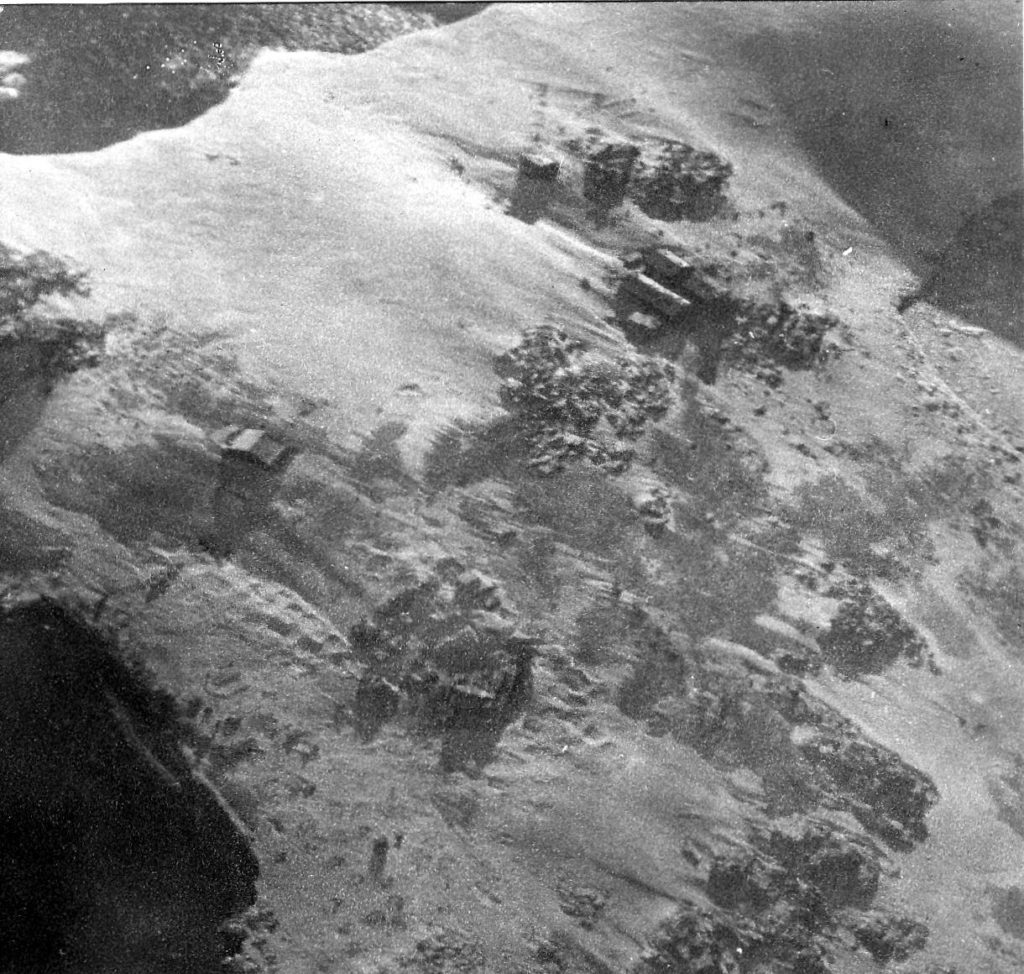
On April 12th, conditions were good for a flight, so the wheels were changed to skis, and the aircraft was hauled up the ramp again using a block and tackle, the engine, and a bit of shoving. Tommy took off uphill, with David as passenger, and they soon climbed up to 7000 feet, flew over to the plateau, sighted John Tonkin’s sledging party, and landed beside them.
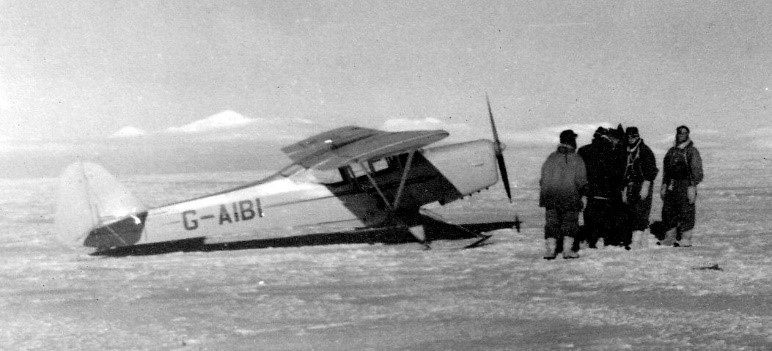
(Photo: John Tonkin Ref. JET111)
Having decided that the tail wheel was very unsatisfactory, David, (in typical Fid fashion) helped by Kenny MacLeod, made first one, (which soon broke) and then a stronger second, out of wood which served for the rest of the plane’s life.
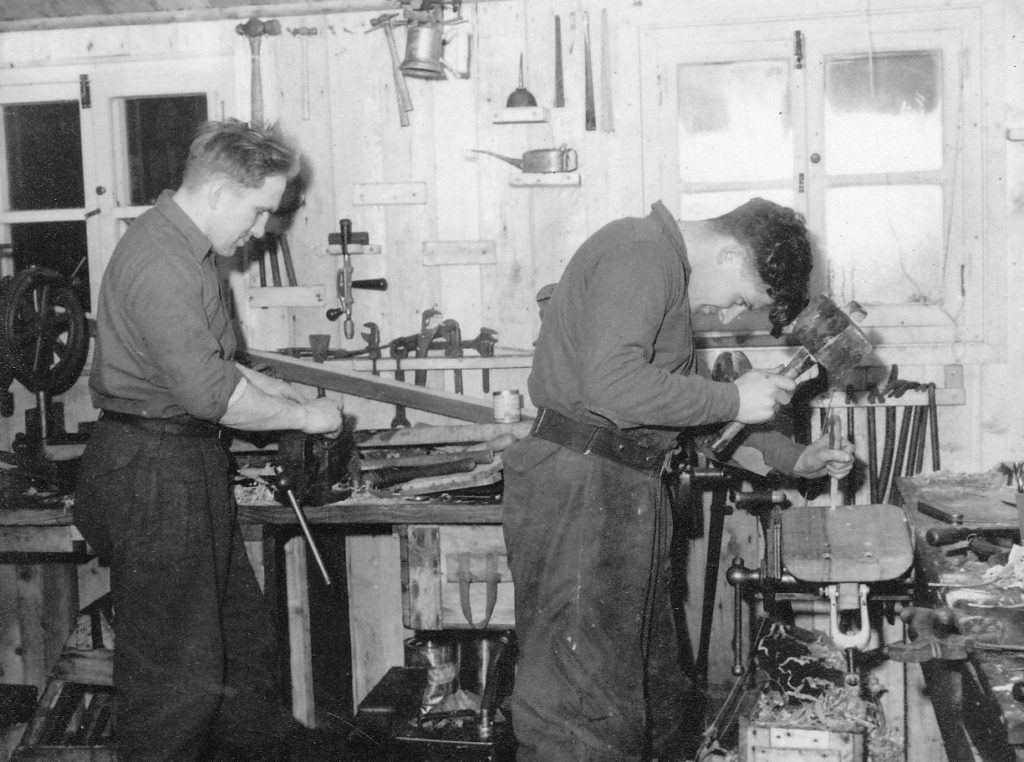
(Photo: John Tonkin Ref. JET044)
On July 2nd, Thomson suffered first-degree burns to both his feet when a basin of near-boiling water was upset over them. This made him unfit for flying, so Bernard Stonehouse took over his duties and (from the sea-ice, which was now more than nine inches thick), the pair subsequently made a good number of reconaissance flights and deliveries to field workers. By September 7th, the plane had flown 30 hours.
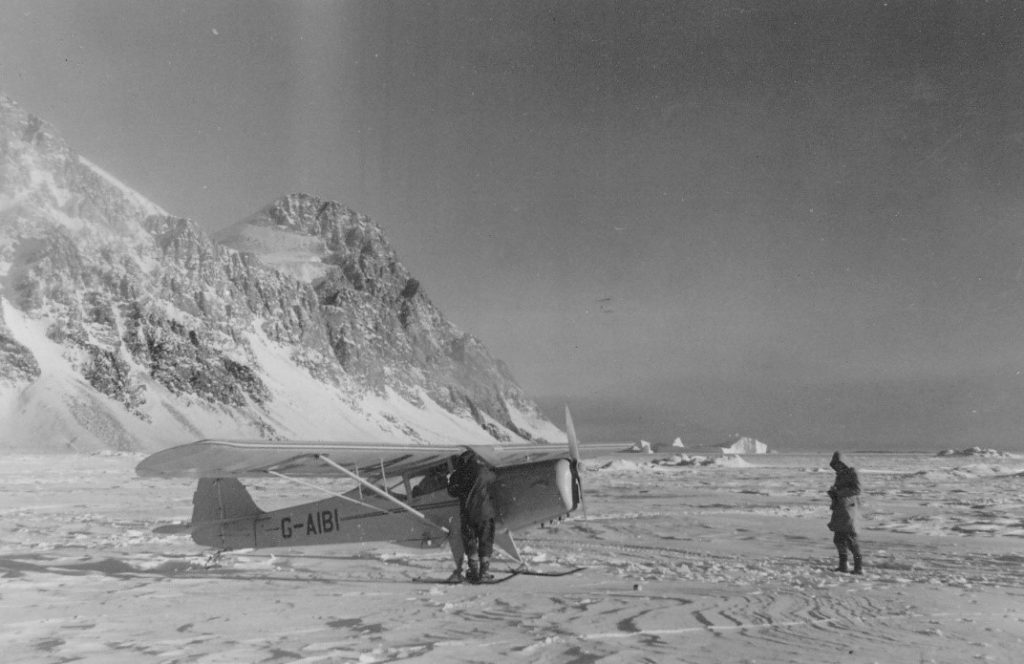
Postscript
By 1965, the hangar had disintegrated, but we cleared it up and made a smooth clean base upon which the Royal Navy Hi-Fix team established their temporary base while doing an offshore hydrographic survey.
It can still be seen on Google Earth.

Keith Holmes (Geologist – Stonington 1965 & 66), based on Archives supplied by Jane Storey, John Tonkin’s daughter

